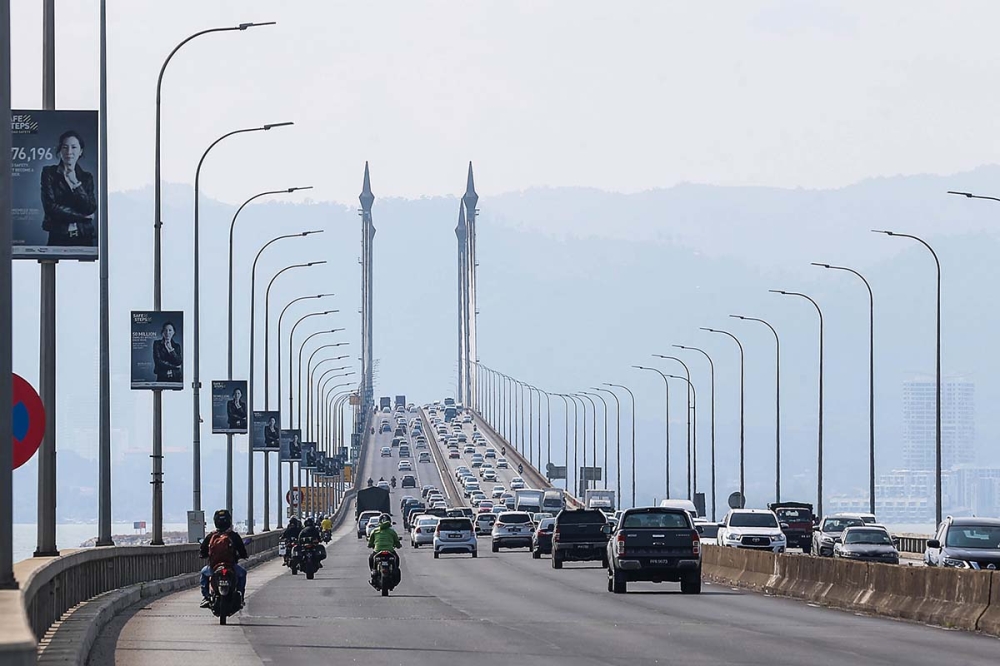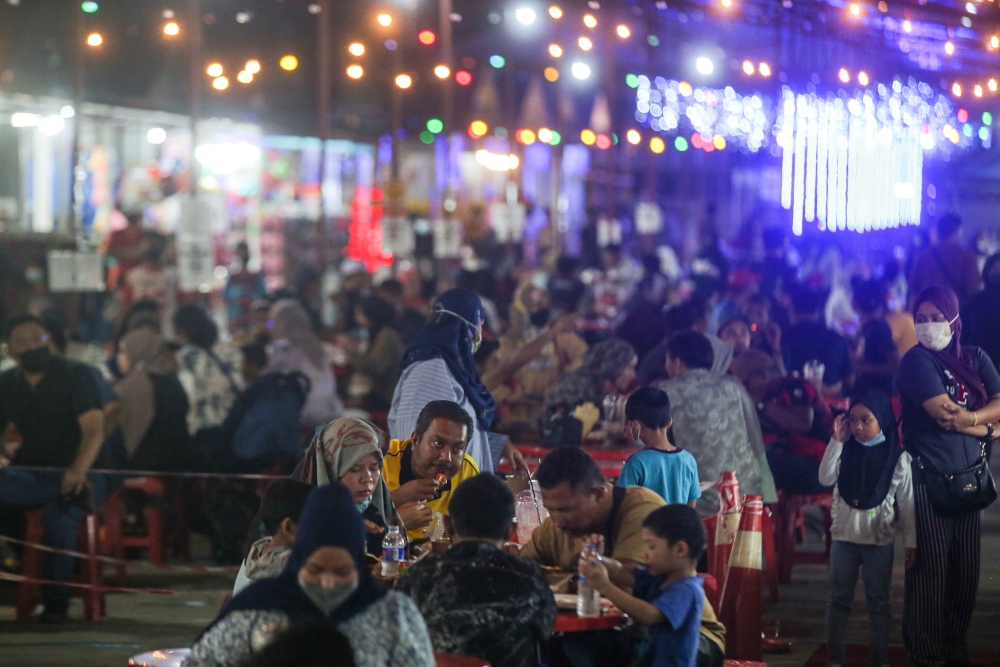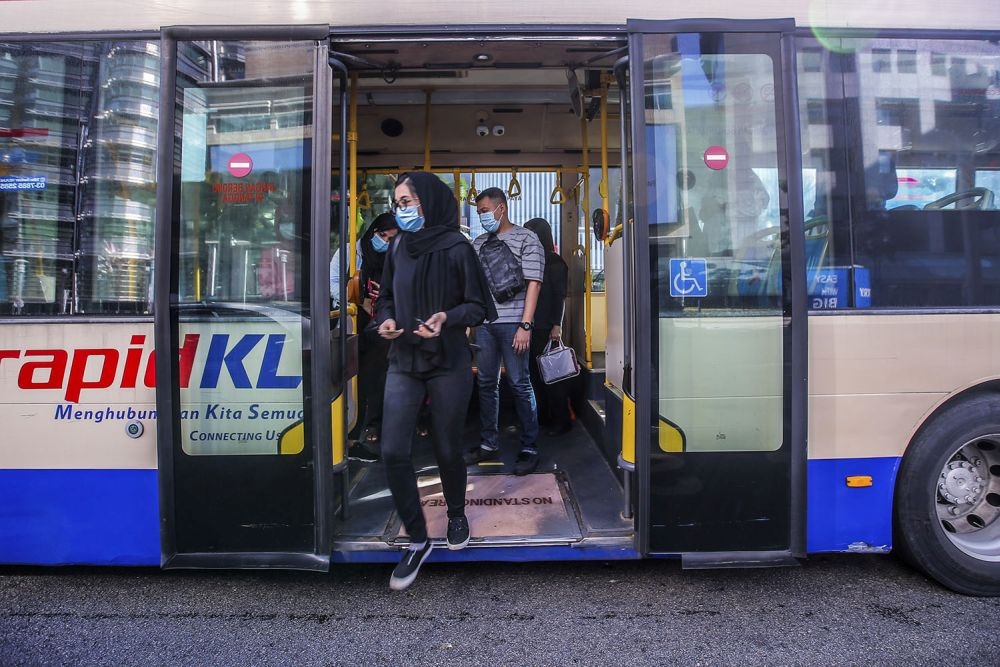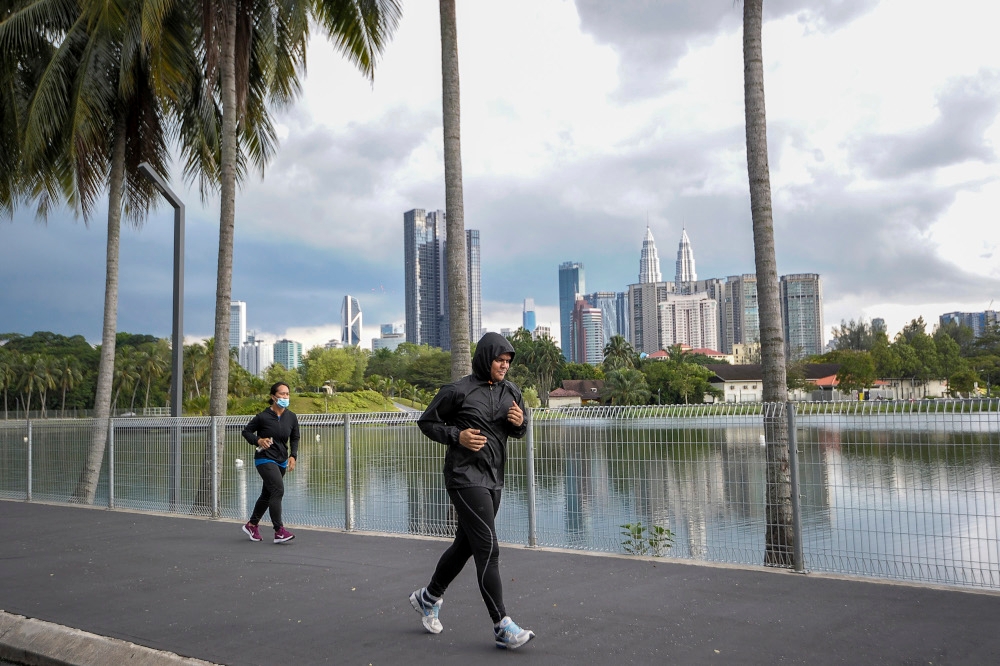KUALA LUMPUR, June 15 — Not yet married and living in the Klang Valley? You will need an estimated minimum of RM2,600 for your monthly spending if you own a car, and at least RM1,930 every month if you rely on public transport instead, a new spending guide shows.
What would a person who is single in Klang Valley (which covers Kuala Lumpur, Putrajaya, Selangor) spend their money on every month?
The spending guide shows that an unmarried person using public transport in the Klang Valley would spend nearly one-third of their estimated RM1,930 monthly budget on food (RM610), almost 20 per cent on rental for a fully-furnished room (RM370), followed by social participation (RM150), transportation (RM140), discretionary expenses (RM130), utilities (RM90), ad-hoc or one-off spending (RM90), personal care (RM70), healthcare (RM30) and personal savings (RM250).
For a car owner who is single in the Klang Valley, their RM2,600 estimated monthly budget would be the same, except for transportation at a much higher RM760 (amounting to 29 per cent of the total budget) and ad-hoc or one-off spending at a higher RM140. In fact, transport cost becomes the highest spending category, even higher than housing costs.
In the same spending guide — which looks at the Klang Valley, nine cities in Peninsular Malaysia and one city each in Sabah and Sarawak — the city with the second highest estimated monthly spending for a single person is George Town in Penang, both for a car owner (RM2,430) and a public transport user (RM1,830).
The third most costly city in Malaysia for singles would be Seremban in Negeri Sembilan (RM2,300 for those owning cars) or Johor Baru in Johor (RM1,760 for public transport users), while the cheapest for both categories would be in Alor Setar in Kedah (RM2,060 for car owners and RM1,530 for public transport users).
The monthly spending estimates provided for the Klang Valley and all the 11 selected cities covered are higher than Malaysia’s current minimum wage rate of RM1,500 (applicable since May 2022 for employers with five or more workers, to apply from July 2023 for employers with less than five workers).

Produced by the Universiti Malaya’s Social Wellbeing Research Centre (SWRC) and commissioned by the Employees Provident Fund (EPF), this latest Belanjawanku expenditure guide is a reference for Malaysians to find out the estimated minimum monthly spending amount they would need to have a “reasonable standard of living” — enough for bare essentials with a few extras not considered luxuries while being able to participate in society through community activities and gatherings with families and friends.
A quick guide on some of the monthly expenses estimates (often calculated by dividing the annual total by 12 months): Social participation includes spending for festive celebrations, birthdays, invitations to weddings, donations for funerals, occasional outings with families and friends, entertaining guests at home; Discretionary expenses (after meeting all essential costs such as rent) can include contribution to parents, life insurance, medical insurance, sports and games, domestic vacation depending on individual priorities; Ad-hoc spending includes vehicle maintenance, road tax and vehicle insurance, clothing, footwear, buying and maintaining furniture and home appliances.
Owning a car: Cheapest in Kuching, highest in Klang Valley
In the full 76-page report titled “Belanjawanku 2022/2023: Expenditure Guide for Malaysians”, the SWRC estimates the costs of car ownership by calculating the monthly loan instalment for a new 1,000 cc car (with zero down payment on a nine-year hire-purchase loan at interest rates at the time of the study), highway toll rates on the Malaysian Highway Authority’s website, and season parking rates charged by the respective city councils.
Out of the 12 cities and areas, the cost of owning a car is highest in Klang Valley at RM760, with a gap of RM180 when compared against Kuching (which has the lowest cost for owning a car RM580).
According to the SWRC, the low cost for car ownership in Kuching is due to lower parking rates and toll-free highway across Sarawak, while the relatively higher cost in the Klang Valley is due to higher parking fees and toll charges on highways.

“Having one’s own car as a mode of transportation provides ease and convenience, however, besides fuel, vehicle maintenance, road tax and insurance, the ad hoc expenses increase by about 49 per cent on average, for all cities,” SWRC said.
Public transport costs by city: Higher if no free bus or travel pass; cheapest in Ipoh
While the Klang Valley is the most expensive out of all 12 cities and areas surveyed as it has the highest cost for almost all areas of spending, the SWRC said an exception would be the cost for public transport in the Klang Valley (second highest at RM140 per month).
This is because the Klang Valley has various modes of public transport with the added benefit of travel passes, while people tend to rely more on e-hailing services in smaller cities where public transportation is less efficient, SWRC said.
In Kuala Terengganu, which has the highest public transport cost at RM150 per month, SWRC said this city does not have access to cheaper travel passes — which the Klang Valley enjoys — such as the RapidKL My50 Unlimited Travel Pass and the SMART Selangor free bus service.
Kuala Terengganu also has a limited number of public transport or buses available.
Ipoh has the lowest estimated public transport cost at RM80 per month due to free buses in this city, SWRC said.

What does this mean for you?
If you are single, switching from public transport to a private car will significantly increase your monthly spending for transport, the SWRC study shows.
The SWRC said such a switch to car ownership for singles would result in a 433 per cent jump in their transport costs, with the additional costs including monthly loan instalment, fuel prices, highway tolls, road tax and insurance.
“It is noteworthy that when making comparisons for transportation expenses, the amount increased almost threefold when a single person chose to buy his own car instead of using public transportation,” the SWRC said in another section of its full report.
The transport costs compared are mainly for travelling within a 30km distance to and from the workplace daily, or a total of 60km travelled per day (30 days per month), with the transport costs estimates also covering the running of errands and occasional visits to meet families and friends.
Using those 11 cities and the Klang Valley in the study, the average transport cost for a single person using public transport would be RM90, as compared to the average cost for an unmarried person who owns a car at RM640. In other words, your transport cost would on average jump by RM550.

The estimated gap between being a public transport user and a car owner for singles was the highest in the Klang Valley, where switching from the RM140 for public transport to a minimum RM760 for car ownership means it will cost you RM620 more every month.
The cost difference or gap was estimated to be the lowest at RM480 per month in both Kuantan (public transport at RM140, car ownership at RM620) and Kota Kinabalu (public transport at RM110, car ownership at RM590).
The 92-page summarised comparison of the 12 cities and areas in the Belanjawanku 2022/2023 guide can be found here, while a more detailed report which includes methodology can be found here.
The SWRC made clear that the spending guide is a “reference budget” which could help individuals plan their finances and assess their purchasing power by city, and that the Belanjawanku guide is not a “standard” that one must follow or a prescription on how to solve an individual’s financial problems.





















